What is Montana sapphire and why should it be on your radar? Well, if you’re an enthusiast of the uncommon and exquisite, you’ll want to dive into the fascinating world of these unique gemstones. Montana sapphires are a rare variety of the magnificent corundum, historically linked to the Gold Rush era in the American West.
These gleaming blue sapphires were not first valued primarily for their majestic aesthetic but rather stumbled upon by gold miners. We’ll dive into their history in the rugged mountains of Montana, where they were first discovered more than 150 years ago.
These vivid sapphires, with their array of shades from cornflower blue to gentle pinks, are not only a vibrant slice of geological history but have also been revered for their metaphysical properties for centuries.
From the original prospectors who held these treasures in their hands to the mines across Montana where these beautiful sapphires are still carefully extracted, this article holds a journey that touches on both the physical and metaphorical aspects of this stunning gem.
- Related article: Gem Deposits in Montana
If you’re a lover of jewelry, a collector of rare gemstones, or just someone fascinated by the stories behind natural treasures, prepare to take a sparkling walk through Montana’s sapphire-studded history. So, are you ready to become an expert on Montana sapphires?
7 Key Takeaways on Montana Sapphires
- Discovered by gold prospectors in the late 1800s, Montana sapphires offer an array of colors and have a notable place in the state’s history, intriguingly shaping the birth of the Montana sapphire industry.
- Yogo Gulch, Eldorado Bar, and Rock Creek are among the primary locations where Montana sapphires are found, offering not only rich deposits but also a touch of historical charm for those interested in sapphire mining.
- Montana sapphires come in a diverse range of colors, from light blue colors to vibrant oranges and pinks, each showcasing a little piece of Montana’s natural beauty.
- Rated at a robust 9 on the Mohs scale and uniquely colored due to geological factors, Montana sapphires are both stunning and durable, making them ideal for a variety of jewelry designs.
- Believed to carry various metaphysical benefits according to crystal therapy, Montana sapphires can offer mental clarity, spiritual insight, and more, adding an intriguing layer to their allure.
- Initially used for industrial purposes, Montana sapphires have now emerged as coveted gems in the jewelry trade, often featured in engagement rings, necklaces, and other custom designs that highlight their unique colors.
- Those seeking more hands-on experience can try sapphire mining at sites like Gem Mountain or Spokane Bar where timing can be key for the richest deposits.
Things to Know About Montana Sapphires
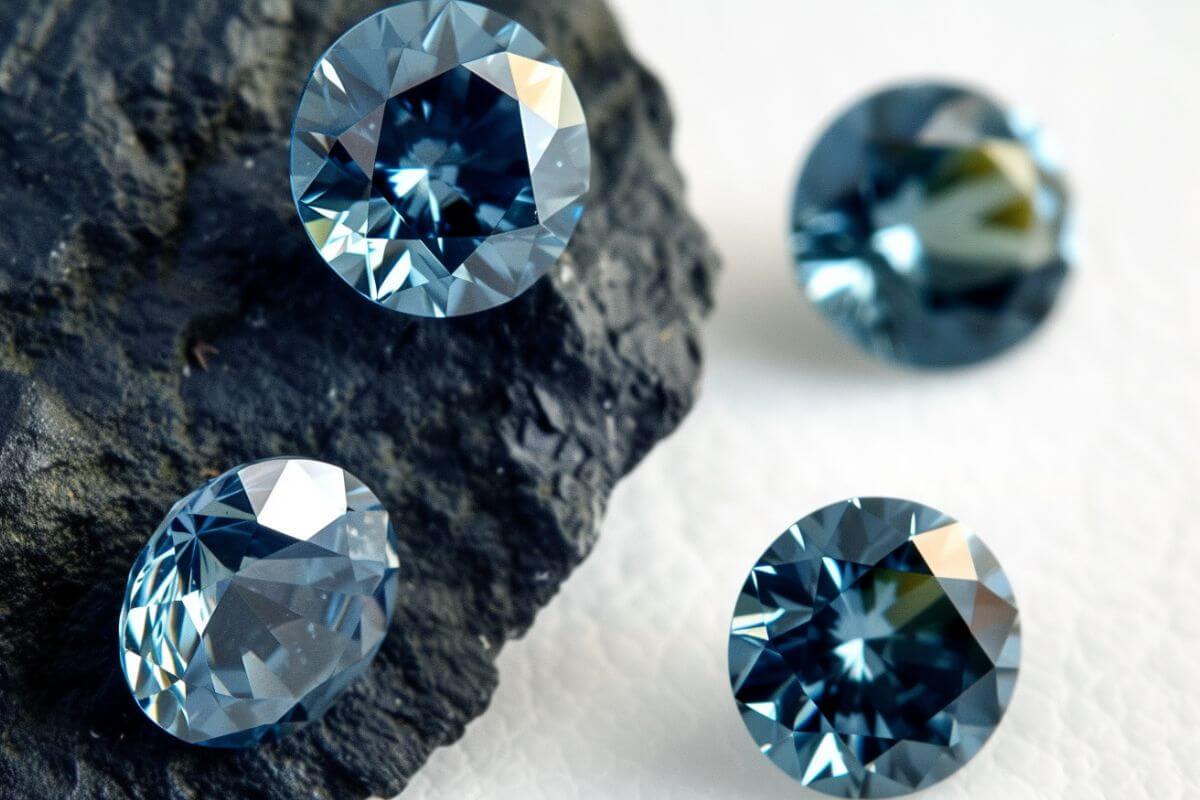
We’re diving deeper into the captivating world of Montana sapphires – those hidden gems that paint the Big Sky Country with a touch of vivid elegance. Join me as we uncover the allure and uniqueness of these stunning stones, plus how you can make the most of your Montana sapphire experience.
1. Montana Sapphire History
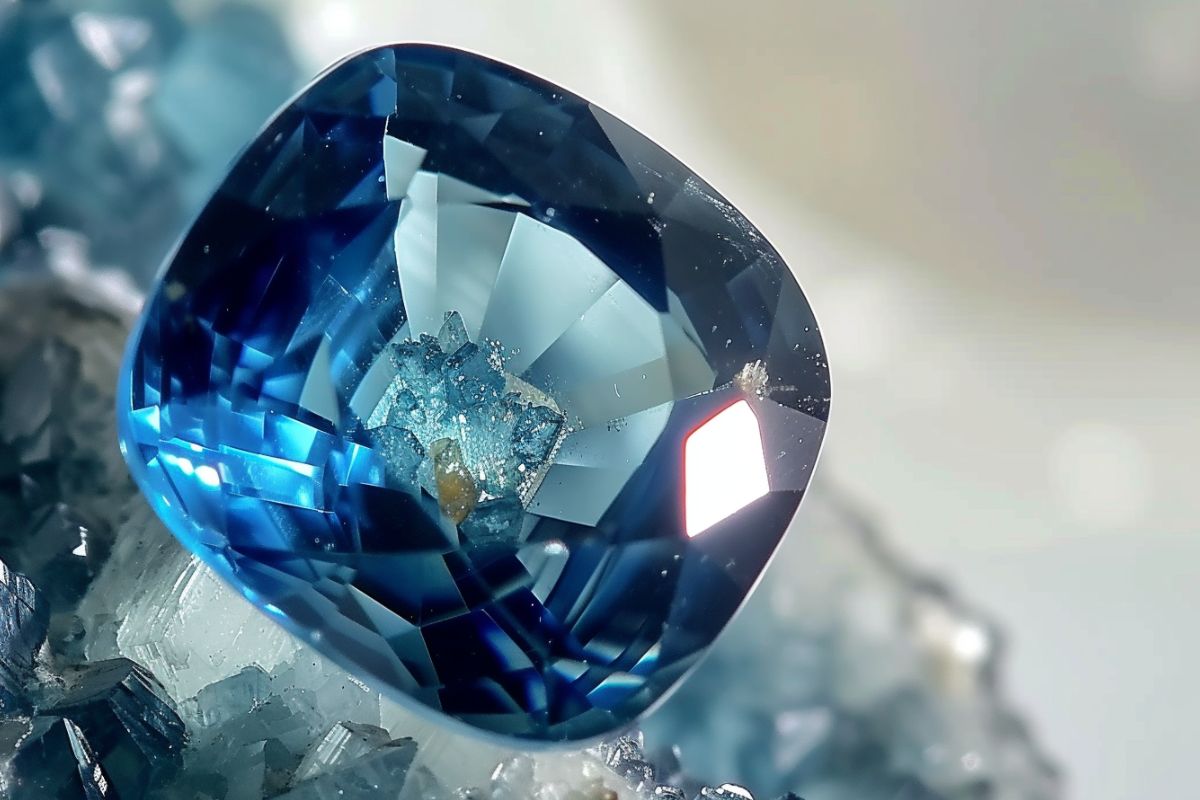
Montana’s sapphire saga is pretty much the gold rush prospectors’ accidental treasure. You see, these folks weren’t exactly out there with gemological encyclopedias; they were hyped about finding shiny gold nuggets. But as it turned out, what they initially dismissed as shiny, odd riverbed pebbles were sapphires – in colors of the rainbow, no less.
First came the shimmering surprise in the 1865 mining operation along the Missouri River. It’s a bit comical when you imagine the gold prospector, Ed Collins, scratching his head over those ‘shiny dense pebbles’ in his jigs. Fast forward, and Yogo Gulch in 1895 pulled off the sapphire mic-drop with bright blue hues that the jewelry industry of that time just couldn’t resist.
Collins must have been perplexed when he stumbled on these rough stones. Imagine his audacious move of sending a batch to Tiffany & Co. in New York, as well as other overseas parties, for a second opinion.
Well, turns out they sent over their seals of approval, and today, these Montana sapphires are as significant as the state’s prized gold, with Collins’ discovery marked as the birth of the Montana sapphire industry.
2. Montana Sapphire Locations
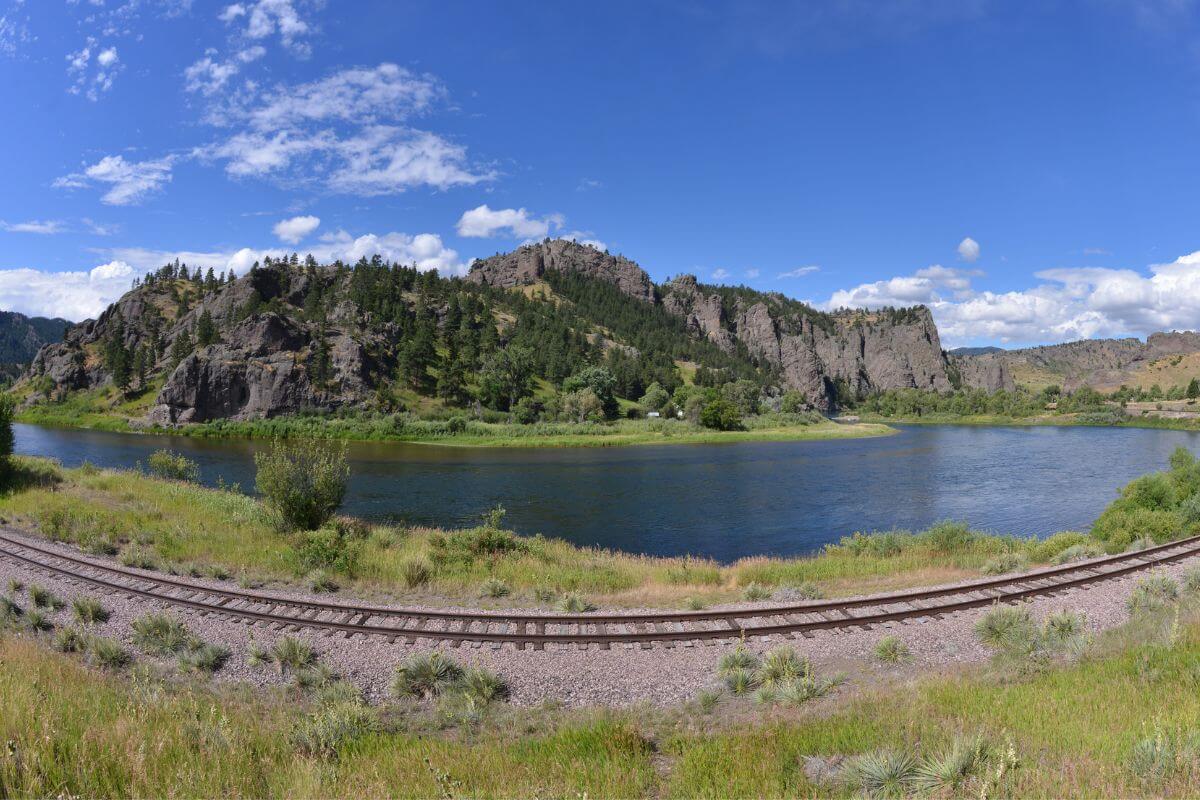
I like to think of Montana as Mother Nature’s gem chest – a treasure trove where precious stones surprise even the most skeptical travelers. The story of Montana sapphires is a bit like discovering a gold mine, literally.
Nearly 160 years ago, as gold prospectors tried their luck in the American West, they stumbled upon a completely different kind of fortune: sapphires. The first deposits were found along the Missouri River near Helena, and over the years, additional gleaming pockets were discovered in Rock Creek and Dry Cottonwood Creek.
Let’s break down Montana’s different types of sapphire deposits:
- Primary Sapphire Deposit – As Montana’s only primary sapphire deposit, Yogo Gulch is where you’ll find the finest and most prized sapphires.
- Secondary Sapphire Deposits – These may play second fiddle but are equally significant in the gemstone world. While Yogo Gulch reigns supreme, secondary deposits near Philipsburg (Rock Creek), Deer Lodge (Dry Cottonwood Creek), and Helena (Missouri River) offer their quality sapphires.
Where you can potentially find these deposits:
- Eldorado Bar on the Missouri River – It’s the largest and best-known of the Missouri River deposits, boasting a 14-mile-long (22.5 km) stretch that once yielded sapphires. Other historically mined spots like American Bar, Dana Bar, and Spokane Bar are like their glitzy next-door neighbors.
- Rock Creek – Or as it’s popularly known, Gem Mountain, is the most important of these locations, sporting a rich history and, well, copious amounts of sapphire.
If you plan on sapphire hunting in these gemstone sources, a few tips: due to private ownership, always ask before you sift, and don’t forget a sturdy hat and sunscreen.
3. Montana Sapphire Colors
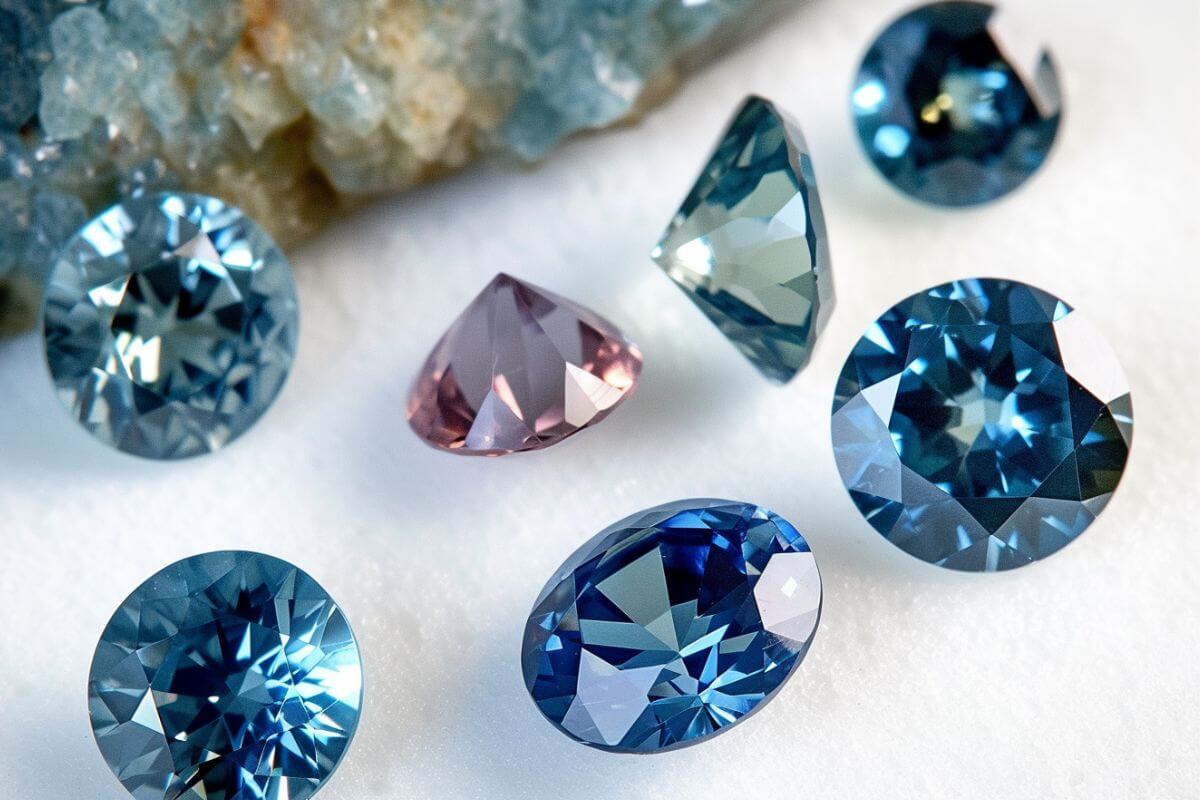
Montana sapphires are like a box of fancy-colored gemstones, or as I like to call them, nature’s jackpot of hues.
The most common colors you’ll come across are pale colors of blue and green – that being said, you’ll be amazed to know that the Treasure State’s sapphire palette extends into yellow, orange, purple, and even pink! But wait, there’s more. In a few lucky cases, Montana even delivers the uber-rare red sapphire.
The ones, particularly from Montana’s Yogo sapphire mine, sinks Montanans’ hearts with their “Cornflower Blue” hue that’s not too light, not too dark, and contains little green. Scientists credit iron and titanium for sapphire’s enchanting blues, and it’s these trace elements that are responsible for the color change magic.
Most Montana sapphires undergo carefully controlled high-temperature heat treatment to enhance their inherent color. This process makes their hues pop – in a purely scientific way, of course.
In a dramatic display of Montana’s sapphire finesse, some stones even showcase a moderate color change under different lighting. Under incandescent light, they can take on a warm pink or orange hue, but when bathed in daylight, they transform into cool greens or violets.
Variety is the spice of life, and this is especially true when it comes to pristine Montana sapphires. So when you’re picking out your Montana memento that’s as unique as the state itself, don’t box yourself into the blue; consider the full range of fancy-colored gems.
4. Montana Sapphire Physical Properties
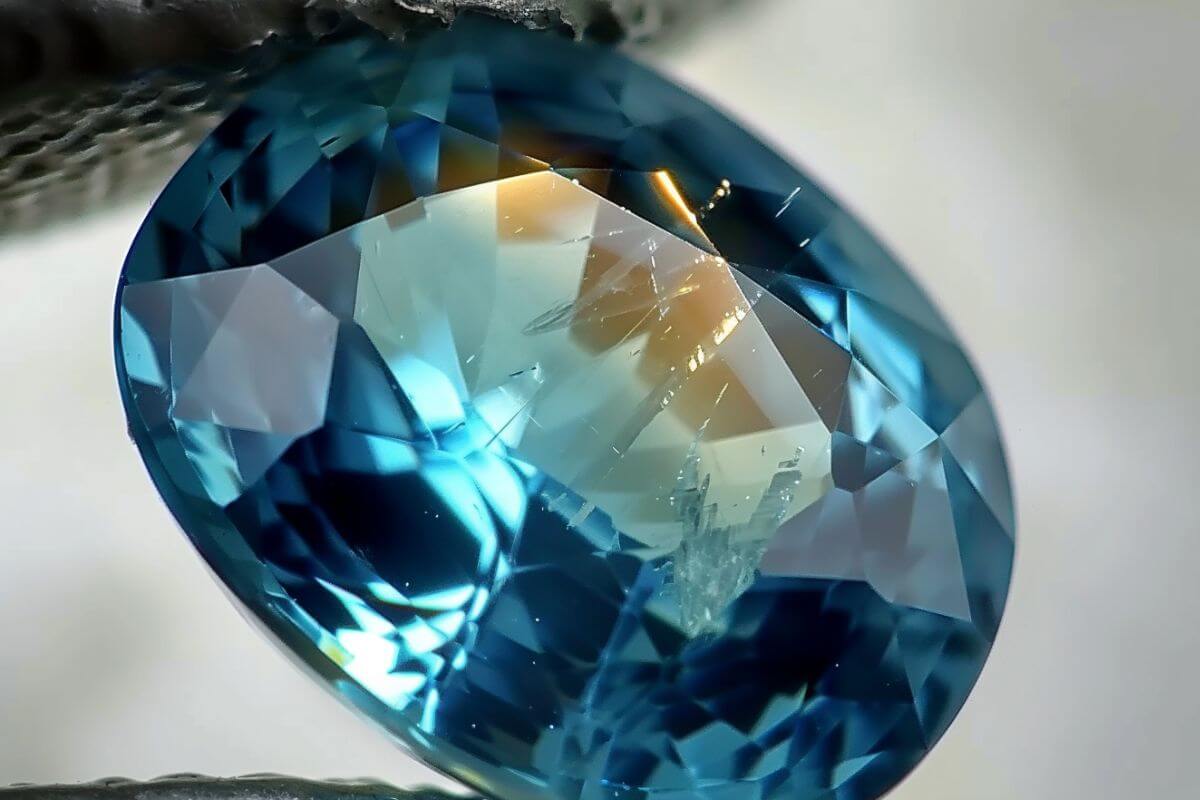
Uncovering the physical properties of Montana sapphires is like unlocking a fascinating geological treasure trove. While these sapphires from secondary deposits share some similarities with their global counterparts, there are peculiar nuances that set them apart.
Intriguingly, these gemstones are essentially a variety of the mineral corundum but with a different twist, yielding unique mesmerizing colors due to the inclusion suite and trace element chemistry. This is probably why the sapphires from Yogo Gulch in Montana are known for their unrivaled cornflower blue hue.
On a scale of hardiness, Montana sapphires are no pushovers either. Rated at a robust 9 on the Mohs scale — where diamond reigns at 10 — these gem-quality sapphires aren’t easy to scratch. This makes them not just beautiful but also incredibly durable, suitable for a variety of jewelry uses, from rings to necklaces.
So, when you’re contemplating adorning yourself with Montana sapphires, you’re not just choosing a stunning piece, but also a gem with a distinct backstory and physical identity.
5. Montana Sapphire Metaphysical Properties

Whether you’re a crystal healing enthusiast or just intrigued by the seemingly magical powers often ascribed to lovely gemstones, Montana sapphires might just put a spell on you. Hey, who doesn’t want a bit more wisdom, mental clarity, and inside peace in their lives?
Believed to carry the power of wisdom by ancient civilizations, sapphires are said to be instillers of mental clarity and clear thinking. They were even thought to be an antidote to poison during Medieval times, which earns them some street cred in the mystery-solving department.
Delving deeper into this mystic realm, sapphires are also considered to offer a wide range of metaphysical benefits. Check this out:
- Blue sapphires, famous for their association with the throat chakra, claims to aid in spiritual truth-finding.
- The purple color of sapphires can help you hack into your psychic abilities and are great for calming emotions.
- Emerald or green sapphires? They tap right into the heart chakra, fostering compassion and trust.
- White sapphires, on the other hand, are crown chakra wonder workers, elevating spirituality and cosmic consciousness.
- Not to be left alone on the sidelines, pink and yellow sapphires work on attraction (the good kind) and stimulate the intellect, respectively.
Sapphires can assist with everything from chakra healing to mental tension release. So, if you find yourself in need of a little mental house-cleaning, a sapphire might be your new best friend.
Of course, how you choose to use or believe in these powers is entirely up to you. But if owning a piece of Montana’s natural beauty can also bring peace and clarity to your mind, it’s a win-win.
6. Montana Sapphire Jewelry
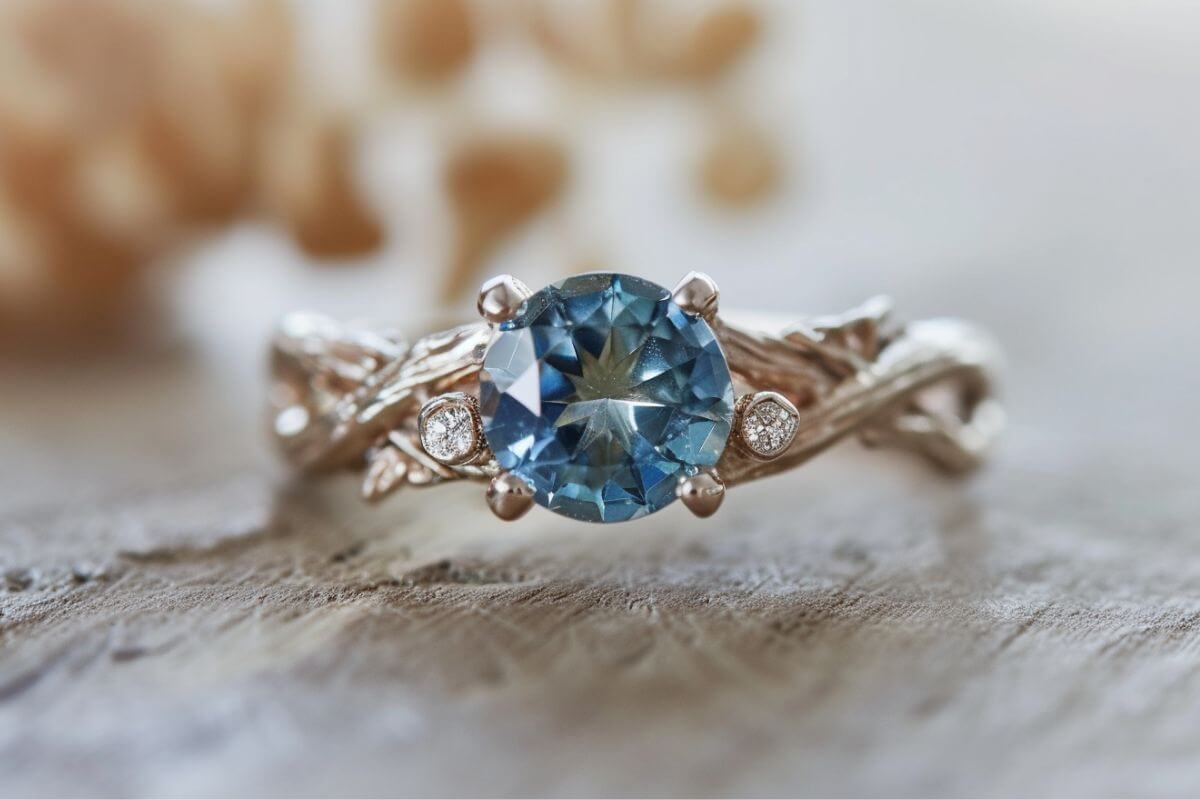
While Montana’s sapphire discovery was initially directed toward industrial applications like watches and instrument bearings, the advent of modern heat treatment technology propelled it into the gem and jewelry trade.
The result? The market is now richer in fancy Montana sapphires than ever before. From watches to stone-studded bracelets, sapphires have emerged from under the radar to center stage in the world of gemstones.
As the beauty and durability of these sapphires became known, they started appearing more and more in stunning jewelry designs, including:
- Engagement Rings – Montana sapphires, known for their exceptional hardness, are gaining popularity as an alternative to diamond engagement rings. Their enduring allure makes them a symbolic choice for engagement rings.
- Necklaces – Often adorned with a single stunning sapphire pendant or as part of a multi-stone statement, Montana sapphire necklaces are versatile and chic.
- Earrings – From subtle studs to cascading chandelier designs, sapphire earrings offer a unique pop of color for every occasion.
- Bracelets – Whether as a standalone piece or part of a set, sapphire bracelets are a charming way to add a touch of Montana’s natural beauty to your ensemble.
To truly make a statement, many opt for custom-designed Montana sapphire jewelry. The process usually begins with a selection of loose Montana sapphires showcasing stunning natural colors.
A rough sapphire on the other hand, straight from the earth and usually untreated, offers a more earthy and raw aesthetic in jewelry. So if you lean towards the rustic and untouched, this could be the perfect choice.
What Is Montana Sapphire Final Thoughts

A sunlit riverbed beckoning with glistening hues of blue, green, and even a rare red isn’t your average treasure hunt; it’s a glimpse of the captivating world of Montana sapphires. Unearthed by chance from gold prospectors’ initial quest, these locally mined gems offer not just a vivid palette for your next jewelry piece but a rich historical allure.
Montana sapphires offer not only stunning visual beauty in a unique range of colors but also a rich history, durable physical properties, and intriguing metaphysical associations, making them a truly captivating addition to any jewelry collection.
And for those adventurous enough to seek them out, the experience of sapphire mining in Montana can be a memorable adventure all its own. From Eldorado Bar to Yogo Gulch, these expansive Montana landscapes present unforgettable experiences.
So, whether you’re a gemstone collector, a believer in crystal therapy, or simply a lover of natural beauty, Montana sapphires promise a rare find – just like the state they call home.
What Is Montana Sapphire FAQs
1. Are Montana Sapphires Real Sapphires?
Montana Sapphires are real sapphires. They are natural gemstones that are highly valued for their unique origin and quality.
2. Is Montana Sapphire Valuable?
Montana sapphires are usually small in size, weighing 1.00 carat or less. Larger stones are uncommon and therefore more valuable. Deep blue Montana sapphires are also very rare and among the most valuable.
3. What Does a Montana Sapphire Symbolize?
Montana Sapphires are often associated with qualities such as wisdom, loyalty, and nobility. Symbolically, they are believed to represent sincerity, truth, and purity, making them popular choices for engagement rings and other meaningful jewelry.
4. How Do I Identify Montana Sapphires?
When identifying Montana Sapphires, it is important to assess their color, clarity, and cut. These gems come in different shades of blue, from light to dark, and may sometimes have a slight greenish tint.
You should also examine the gemstone for any inclusions or imperfections, and consider its overall cut and brilliance. By doing so, you can better distinguish authentic Montana sapphires.
5. Are Montana Sapphires Good Quality?
Montana sapphires are generally considered of good quality. Their superior formation, characterized by a hardness of 9 on the Mohs scale, which makes them highly scratch-resistant and durable, contributes to their reputation for being suitable for everyday wear.
Uncover more about Montana in our insightful articles below:

